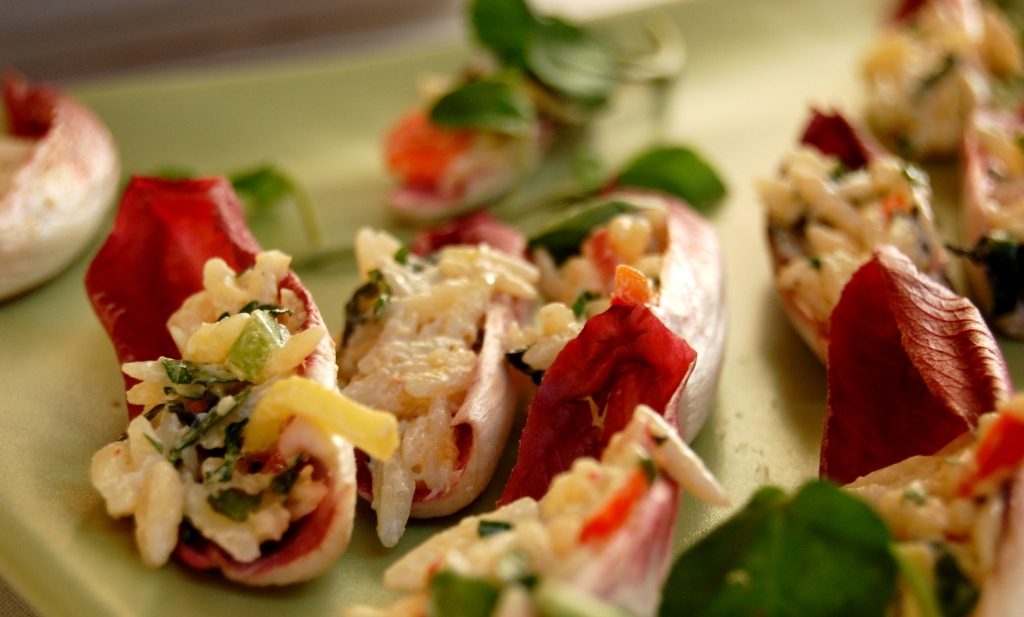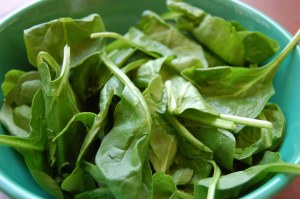This month, I'm baking for power
 August 11, 2011
August 11, 2011 
In this month's column, I introduce you to my world of baking without flour and sugar. What?! Blasphemy, you might be thinking. This is tricky terrain, no doubt about it. Don't think that I haven't had my fair share of bitter chocolate cupcakes and unsalvageable cookies by trying to make them more virtuous than they are by nature. This has surely been the case!
However, I've slowly learned my way around the flour-free kitchen and I have some tricks to share. My reason for bending the baking rules? I love a good breakfast treat. Who doesn't? But when the usual suspects are laden with refined grains and tons of sugar, they don't help us out nutritionally – and that also means mentally, physically and spiritually, if you ask me.
TRICK #1: ALMOND FLOUR.
Elana's Pantry is my go-to resource for all things almond flour, closely followed by Caitlin of Roost. Both of these ladies make do wonderfully on a grain-free diet, and every single recipe is an inspiration. I've learned to really love the texture and flavor almond flour brings to baked goods and pancakes, but I've found in my own kitchen that it works best when used in combination with other flours. Therefore....
TRICK #2: MILLED FLAXSEED.
Flaxseed meal! Who would've thought? I first discovered the magic of flax in these pancakes, where the little pulverized nutritional powerhouses turned into fluffy, cakey goodness on a hot griddle. My guess is that because ground flax absorbs so much liquid and reacts especially well with beaten eggs, there's almost no need for flour at all. Make sure to buy milled flaxseed, rather than just ground flaxseed – the finer consistency will give you more of a flour-like texture. I bought a small coffee grinder just for this purpose, and it makes the perfect flax for baking.
TRICK #3: DATES INSTEAD OF SUGAR.
Don't get me wrong – I love sugar. I just hate what it does to my body and mind. The solution? Dates! Dates are incredible. They are packed with vitamins and minerals, fiber, and a carmely, toasty sweetness that reminds me of brown sugar and molasses. The best way to use them is soaked in warm water, pitted, chopped, and blended in with the liquid ingredients. You could also eat them with a smear of peanut butter. Delish!
These three tricks are what helped me create the following recipe for DATE & ORANGE POWER MUFFINS. You can forget ginormous cafe muffins and sugary pastries that leave you hungry an hour later, because just one of these muffins has a crazy amount of protein, healthy fat, fiber, vitamins, and deliciousness that will keep you satisfied in every sense of the word. Please make these, and don't forget to head on over to the column for more fun tidbits!

DATE & ORANGE POWER MUFFINS :: MAKES 10
1 cup almond flour
1/2 cup flaxseed meal
1 tsp. baking soda
1/2 tsp. sea salt
6 dates, pitted and chopped
3 eggs
2 Tbsp melted coconut oil or butter
1/4 cup orange juice
1/4 cup sunflower seeds
1/4 cup pumpkin seeds (Pepitas)
1 Tbsp chia seeds
- Preheat oven to 350’ and line 10-12 muffin cups with paper liners.
- In a large bowl, mix almond flour, flaxseed meal, baking soda and sea salt.
- In a blender, mix dates, eggs, oil and orange juice on medium speed until smooth.
- Add wet ingredients to dry ingredients and stir until thoroughly combined. Fold in sunflower, pumpkin and chia seeds.
- Divide batter among muffin cups and bake for about 20 minutes, until a toothpick inserted into the center comes out clean. Allow to cool for 10 minutes before transferring to a wire rack. Serve, or let cool completely and store in an airtight container in the refrigerator.
 gluten-free,
gluten-free,  vegan,
vegan,  vegetarian in
vegetarian in  breakfast,
breakfast,  snack,
snack,  super food
super food 



















